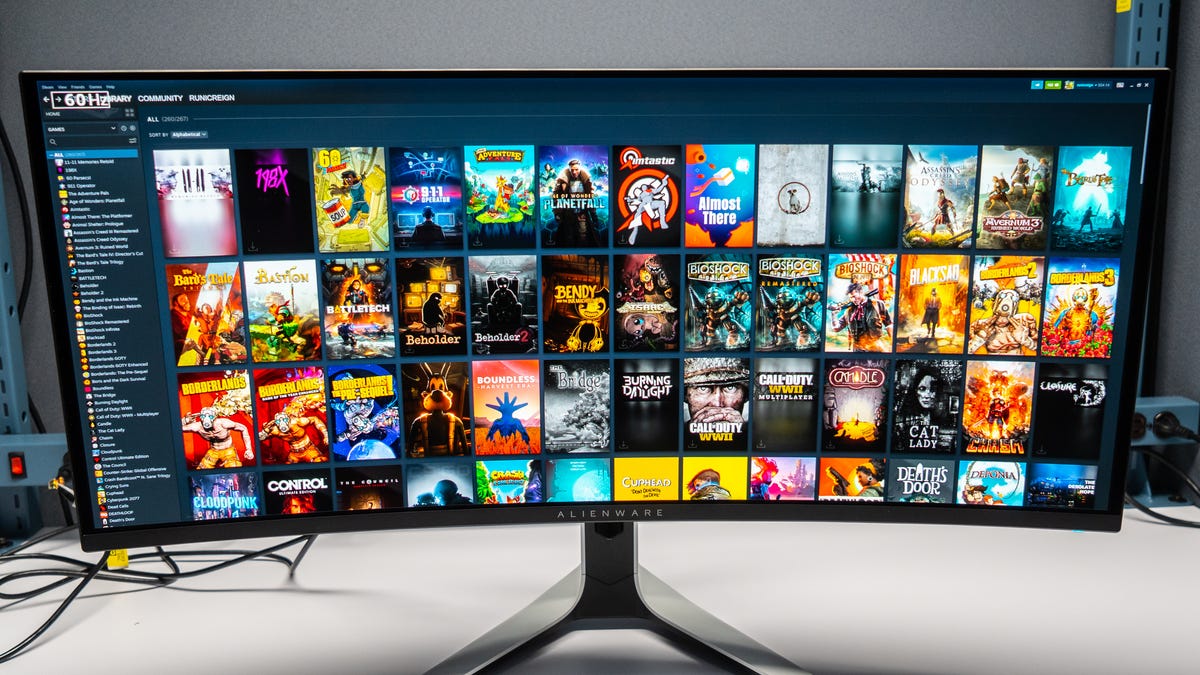 Why You Can Trust CNET
Why You Can Trust CNET How CNET Tests Monitors
The method behind our monitor-review madness.

Monitor testing and evaluation for standalone reviews or inclusion in our list of best monitors consists of formal and subjective quality tests and hands-on assessment of the display's design and features -- connection selection and location, menus and options, and overall behavior. As part of the process, we use the monitor for tasks specific to its mission, such as everyday productivity, video streaming, image and video editing, or different types of gaming, such as first-person shooters or role-playing games. Note that we report only a fraction of our results, usually what's necessary to adequately convey a monitor's strengths and weaknesses for particular uses.
The process begins with unboxing and setup. Each monitor is connected to our Windows-based desktop testbed (or a relatively high-end Mac in cases that require it), equipped with a current-generation Intel Core i9 and high-end Nvidia GeForce graphics card. Both the computer and monitor are plugged directly in to a wall outlet to prevent any power issues that might affect performance.
We generally prefer to use our cables rather than the manufacturer-supplied ones, since they're a known quantity and tend to be higher quality; if we run into any issues, we double check using the manufacturer's cables. DisplayPort is our primary connection for testing. If the monitor specifies any console-specific capabilities, we connect it to the relevant console -- Xbox Series X and/or PS5 -- via HDMI.
Location and accessibility of the connections is a big design concern for some people.
Before any testing begins, we photograph the default settings and all menu options for reference and to determine the complete set of tests we'll need to run on that particular monitor given its specific capabilities. How extensively we test depends on the capabilities of the monitor, the screen and backlight technology used, and the judgment of the reviewer. We disable power-saving measures where relevant, which can affect brightness and related measures (the option is mandatory per California law). We use a subset of these tests to evaluate laptop displays and run them both plugged in to a wall outlet and on battery using the default profile but with screen timeouts disabled.
We also record any relevant information about the panel -- manufacturer specs for resolution, color gamut and profiles, refresh rates and so on -- that may affect our evaluation against the manufacturer's claims. While we review a display with the company's publicly expressed target market in mind, we also consider the monitor's suitability for other uses that might apply. Wherever possible, we download drivers and color profiles specific to the monitor.
What we measure
All measurements are performed using the most recent version of Portrait Display's Calman Ultimate software using an X-Rite i1Display Pro Plus (rebranded as Calibrite ColorChecker Display Plus) and a variety of included patch sets, with additional HDR testing using a Murideo Six-G pattern generator and/or the Client3 HDR patterns within Calman. We periodically spot-check the colorimeter's accuracy against the Konica Minolta CS-2000 spectroradiometer used for our TV testing.
Stand design and features and cable management are important when looking at monitors.
Our test lab is equipped with blackout curtains to fully block ambient light, though complete darkness isn't essential since the colorimeter sits directly on the screen and isn't affected by dim lighting. The room has natural light and various artificial sources for normal usage evaluation.
Color accuracy results are reported in units of Delta E 2000. We perform most of the tests (where we know results vary) at both 100% and default hardware brightness levels.
Core tests -- those we run on every display, regardless of intent or price -- include:
- White point, brightness (peak and minimum), contrast and gamma for sRGB and the native color space measured across 21 gray patches (0-100%), reported rounded down to the nearest 50K as long as there are no big variations. A variation of plus or minus 200K around the target color temperature is considered acceptable for all but the most color-critical displays.
- Color gamut coverage and accuracy for sRGB and the native color space using Calman's standard Pantone patch set plus grayscale and skin tone patches.
- We add Blur Busters' motion tests for gaming monitors to judge motion artifacts (such as ghosting) or refresh rate-related problems.
If a monitor has menu options beyond the basics, we run the same core tests for the following settings when available:
- All color presets.
- All gaming presets (such as FPS). We also test brightness for pixel overdrive and motion-blur reduction modes (which tend to lower brightness considerably).
- Gamma for at least 1.8, 2.2 and 2.6.
- Color temperatures for at least 5,000K, 6,300K, 6,500K and 9,300K.
For HDR, we add testing for HDR-specific presets (such as Game HDR or Cinema HDR) and brightness for window sizes of 1%, 5%, 10% and 100% of the screen.
Finally, there are tests we only run when needed to understand the measurements we've gotten or to confirm that artifacts we're seeing -- notably nonuniformity -- aren't imaginary.
The best laptops in every category
- Best Laptop for 2023
- Best Windows Laptops
- Best Laptop for College
- Best Laptop for High School Students
- Best Budget Laptop Under $500
- Best Dell Laptops
- Best 15-Inch Work and Gaming Laptops
- Best 2-in-1 Laptop
- Best HP Laptops
- Best Gaming Laptop
- Best Cheap Gaming Laptop Under $1,000
- Best Chromebook: 8 Chromebooks Starting at Under $300

